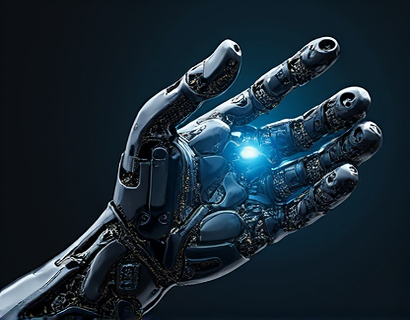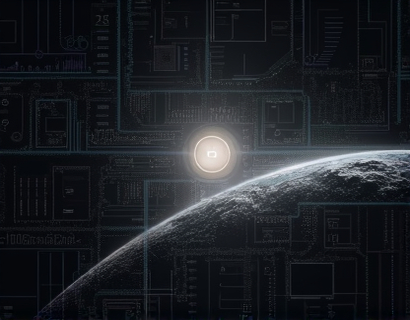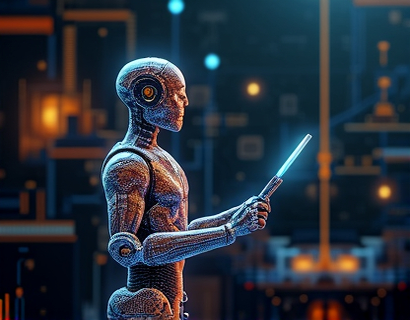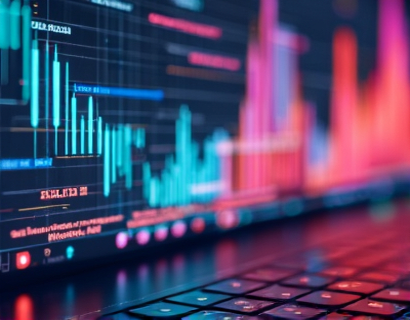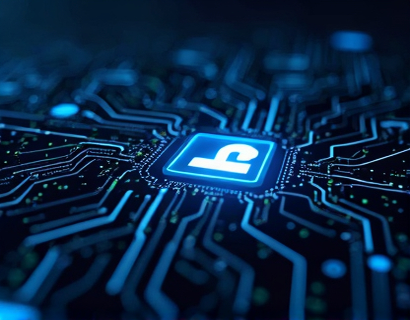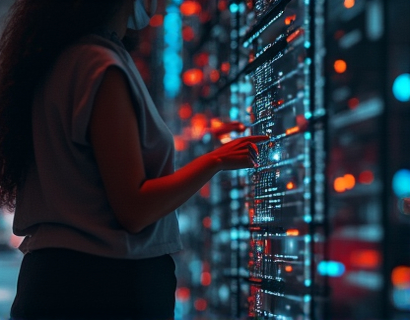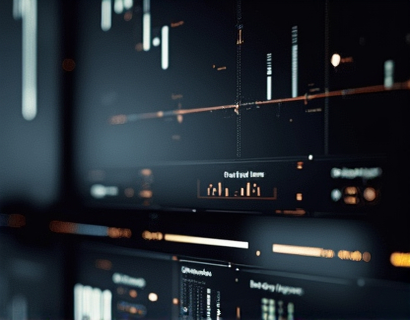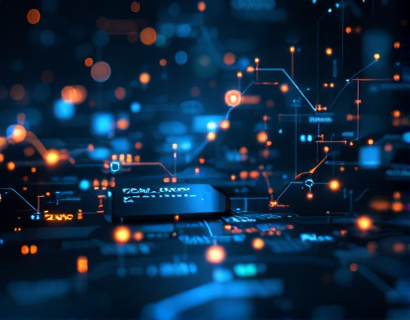Elevating Digital Transformation: The Synergy of Crypto and AI
The intersection of cryptocurrency and artificial intelligence (AI) is redefining the landscape of digital transformation. This convergence is not just a technological curiosity but a powerful force driving innovation across various industries. As tech innovators and early adopters, understanding how these advanced technologies can enhance connectivity, elevate online presence, and pave the way to substantial digital success is crucial. This article serves as a comprehensive guide, exploring the multifaceted ways in which blockchain and AI are revolutionizing app and service interactions, ultimately leading to unprecedented growth and engagement.
Foundations of Blockchain and AI
To fully appreciate the impact of crypto and AI on digital transformation, it's essential to first understand the fundamentals of both technologies. Blockchain, at its core, is a decentralized ledger technology that ensures transparency, security, and immutability in transactions. It operates on a network of nodes, each maintaining a copy of the ledger, which is updated through consensus mechanisms. This decentralized nature eliminates the need for intermediaries, reducing costs and increasing trust.
Artificial intelligence, on the other hand, encompasses a range of technologies designed to simulate human intelligence in machines. These include machine learning, natural language processing, and computer vision. AI's ability to analyze vast amounts of data, identify patterns, and make predictions makes it an invaluable tool for optimizing processes and enhancing user experiences.
Enhancing Connectivity through Blockchain
The integration of blockchain technology into digital ecosystems significantly enhances connectivity. By providing a secure and transparent platform for data exchange, blockchain enables seamless interactions between different systems and services. Smart contracts, self-executing contracts with the terms directly written into code, automate and enforce agreements without the need for intermediaries. This automation not only speeds up processes but also reduces the risk of errors and fraud.
In the context of app and service interactions, blockchain facilitates interoperability. Different platforms and applications can communicate and share data securely, creating a more integrated and efficient digital environment. For instance, in the finance sector, cross-border payments can be streamlined through blockchain, reducing transaction times from days to minutes and lowering fees.
AI-Driven Personalization and Engagement
AI's role in enhancing user engagement cannot be overstated. By leveraging machine learning algorithms, applications can offer personalized experiences tailored to individual user preferences and behaviors. This level of personalization fosters deeper user engagement and loyalty. For example, recommendation systems in e-commerce platforms use AI to suggest products based on a user's browsing and purchase history, increasing the likelihood of conversion.
Moreover, AI-powered chatbots and virtual assistants provide instant and context-aware support, enhancing the user experience. These AI-driven tools can handle a wide range of queries, from simple information requests to complex problem-solving, thereby reducing the burden on human support teams and improving response times.
Security and Trust through Blockchain and AI
Security is a paramount concern in the digital age, and the combination of blockchain and AI offers robust solutions. Blockchain's inherent security features, such as cryptographic hashing and decentralized consensus, ensure that data is tamper-proof and transparent. AI, with its advanced anomaly detection capabilities, can further enhance security by identifying and mitigating potential threats in real-time.
For instance, AI can monitor blockchain networks for unusual activity patterns that may indicate a security breach. By combining these technologies, organizations can build trust with their users, knowing that their data is protected and transactions are secure. This trust is crucial for adoption and sustained growth in the digital ecosystem.
Optimizing Operations with AI
Beyond enhancing connectivity and security, AI plays a pivotal role in optimizing operations within digital ecosystems. Predictive analytics, a subset of AI, uses historical data to forecast future trends and behaviors. This capability allows businesses to make data-driven decisions, optimize resource allocation, and improve operational efficiency. For example, in supply chain management, AI can predict demand fluctuations and adjust inventory levels accordingly, reducing waste and ensuring timely delivery.
AI-driven automation also streamlines backend processes, from data entry to customer service. Robotic process automation (RPA) can handle repetitive and rule-based tasks, freeing up human resources to focus on more strategic activities. This not only increases productivity but also reduces operational costs.
Innovative Ucosystem Solutions
The convergence of blockchain and AI gives rise to innovative Ucosystem solutions that redefine how apps and services interact. These solutions leverage the strengths of both technologies to create seamless, secure, and personalized digital experiences. For instance, a Ucosystem platform can use blockchain to manage digital identities, ensuring that user data is secure and verifiable. AI can then analyze this data to provide tailored services and recommendations, enhancing user engagement and satisfaction.
Another example is the use of blockchain for decentralized data storage, combined with AI for data analysis. This setup not only ensures data integrity and privacy but also enables efficient and scalable data processing. Such solutions are particularly valuable in industries like healthcare, where data security and privacy are critical.
Case Studies and Real-World Applications
Several industries have already begun to harness the power of blockchain and AI to drive digital transformation. In the healthcare sector, a Ucosystem platform can use blockchain to securely share patient records across different providers, ensuring continuity of care. AI algorithms can analyze this data to identify patterns and predict health outcomes, leading to more personalized and effective treatments.
In the finance industry, blockchain-based trading platforms combined with AI-driven risk assessment tools can enhance market efficiency and security. These platforms can execute trades faster and with lower fees, while AI helps in identifying and mitigating potential risks, such as fraud and market manipulation.
In the retail sector, a Ucosystem approach can integrate blockchain for supply chain transparency and AI for inventory management and customer insights. This integration ensures that products are sourced ethically and efficiently, while AI-driven insights help in optimizing stock levels and personalizing shopping experiences.
Challenges and Considerations
While the potential of blockchain and AI in digital transformation is immense, there are several challenges and considerations to keep in mind. One of the primary challenges is the technical complexity involved in integrating these technologies. Organizations need to invest in skilled personnel and robust infrastructure to implement and maintain these systems effectively.
Regulatory compliance is another critical aspect. As blockchain and AI are relatively new fields, regulatory frameworks are still evolving. Ensuring compliance with data protection laws, such as GDPR, and navigating the regulatory landscape is essential to avoid legal issues and build user trust.
Scalability is also a concern. While blockchain and AI offer significant benefits, scaling these solutions to handle large volumes of data and transactions requires careful planning and optimization. Solutions like sharding in blockchain and distributed computing in AI can help address these challenges, but they require ongoing research and development.
Roadmap to Digital Success
For tech innovators and early adopters looking to leverage the power of blockchain and AI, here is a roadmap to achieving substantial digital success:
- Assess Current Infrastructure: Evaluate your existing systems and identify areas where blockchain and AI can add value. Focus on processes that are repetitive, secure, and data-intensive.
- Build a Skilled Team: Assemble a team with expertise in both blockchain and AI. This includes developers, data scientists, and security experts who can navigate the technical complexities.
- Pilot Projects: Start with small-scale pilot projects to test the integration of blockchain and AI. This approach allows you to refine your strategies and demonstrate tangible benefits before a full-scale rollout.
- Focus on User Experience: Ensure that the implementation of these technologies enhances the user experience. Personalization, security, and efficiency should be at the forefront of your design decisions.
- Monitor and Optimize: Continuously monitor the performance of your blockchain and AI systems. Use analytics to identify areas for improvement and optimize processes accordingly.
- Engage with the Community: Participate in industry forums, conferences, and open-source projects to stay updated on the latest developments and best practices. Collaboration can lead to innovative solutions and partnerships.
By following this roadmap and staying committed to innovation, tech organizations can unlock the full potential of blockchain and AI, driving substantial growth and engagement in the digital landscape.
Conclusion
The synergy between blockchain and AI is transforming the digital world, offering unprecedented opportunities for growth and engagement. By enhancing connectivity, personalizing user experiences, ensuring security, and optimizing operations, these technologies are paving the way for a more efficient and trustworthy digital ecosystem. As tech innovators and early adopters, embracing this convergence is not just an option but a necessity for staying competitive and relevant in the rapidly evolving tech landscape.




